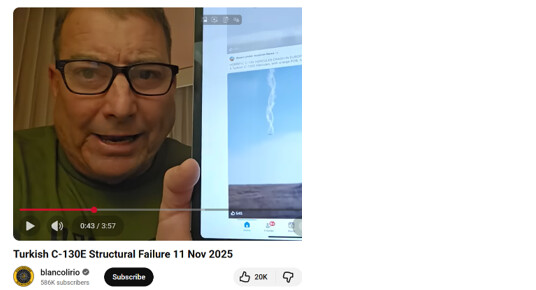EDIT: Turkish C-130E Structural Failure 11 Nov 2025

Juan Brown is currently a commercial airline pilot and like Capt. Steve, flew in the military (Capt Steve Navy P-3’s; Juan Brown Air National Guard C-130’s.) P-3’s and C-130’s were/are both originally equipped with 4-engine Allison turboprops with Hamilton Standard variable pitch propellers.
I say that to acknowledge both guys are not only experienced pilots, but have intimate knowledge and experience in the same “aircraft community” as this Turkish cargo plane. Juan offers some additional insight here and also references a 2017 C-130 crash where detaching propeller(s) severed fuselage structural members and flight controls. He also mentioned that Turkish C-130 was an Echo version manufactured in 1968 and was still using the old propellers versus what is found on the newer Juliet models.
I supported P-3’s in the 80’s and 90’s and recall when a P-3 did a wheels-up landing in Hawaii (17 May 1983). When the plane began scraping the tarmac, one of the four prop blades departed the #2 engine and penetrated the port-side fuselage endwise (punched a round hole) and it departed the starboard-side fuselage lengthwise (leaving a rather long gash). Bet that was an exciting moment for proximate flight crew members.
I mention all this to bolster Juan Brown’s contention that a prop blade(s) may have caused the C-130 to break apart. Once the structure is compromised, it is hard to say what the resultant forces (and perhaps additional detaching prop blades and debris) will do to a plane.
That said, the Turkish falling wing-and-fuselage remnant is not severed along the line of rotating propellers (see stock image below).
(Note: The propeller line is painted onto the fuselage as a safety mechanism to visually inform ground crews of the rotating prop boundary.)
And yes, is does look like the Turkish fuselage was severed very cleanly fore and aft.



